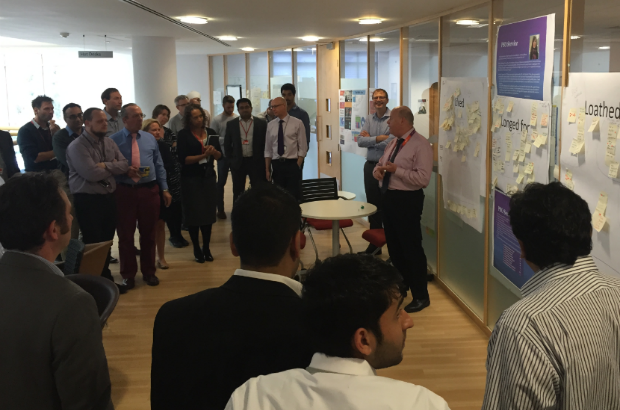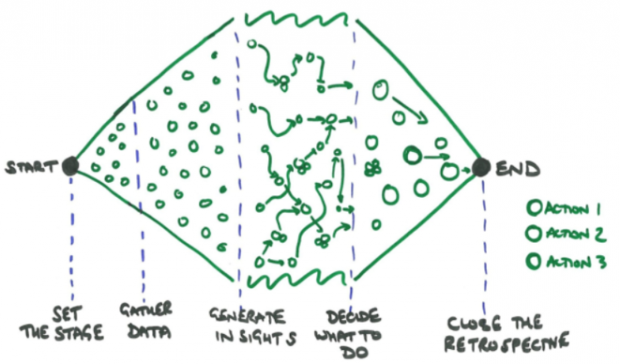
Recently I was asked to facilitate a giant departmental retrospective. Retrospectives are a key part of agile development - they're a special meeting where a team gathers following the completion of an increment of work. The purpose of a retrospective is to review the work done and refine the team’s methods and approach going forwards.
The aim of our giant organisational retrospective was to look back at the previous year's work, review what we'd delivered, celebrate successes, and focus on how the we might move forward.
As a Certified Scrum Master I have facilitated different types of retrospectives, but this was my first time facilitating a giant organisational retrospective and I looked forward to the challenge.
For my giant retrospective I ensured the focus was on the whole organisation and that the increment of work was what the whole organisation achieved over the last year.
There are many different approaches to running a retrospective however they all have the following common approach:

Working with the Head of Agile Delivery and other Scrum Masters, we decided to use the retrospective method of the 4 Ls - Liked, Loathed, Longed For and Learnt (although we removed the Learnt).
We placed large sheets of paper with the titles of Liked, Loathed and Longed For on the walls, ensured we had a supply of sticky notes and pens, and we were ready to go.
How did we run the session?
Staff attended 7 minute briefings from 7 different areas of the department, receiving updates on work done over the last 12 months, reflecting on successes, and asking questions. Following these briefings, staff were invited to be part of a giant retrospective.
- Set the stage – we explained the process of the retrospective and what was required to all staff.
- Gather data – we asked everyone to add sticky notes with what they Liked and Loathed from the organisation over the last year and what they Longed For going forward. Once everyone had added their sticky notes we grouped common comments together.
- Generate insights – we reviewed the information with each group to discuss the ‘why’ and begin thinking about what to do differently. Next, we asked each person to “dot vote” on each area (Liked, Loathed and Longed For) to signify what their highest priority was.
- Decide what to do – with the senior management team, we reviewed the highest 5 voted for comments from each of the 3Ls, generating actions to take forward for the next year.
- Close – The Chief Digital Officer gave a closing speech, reviewing the information collected in the retrospective and the way the organisation would progress forward.
The day was a success with over 100 people attending and excellent feedback given on the structure of the event.
Thank you to everyone who helped plan and organise this event. It has been excellent, allowing people to review the last year and have an input into the future. I would like to thank our Head of Agile Delivery, Alan De Ste Croix, for asking me to be a part of this event.
Any question or comments are always welcomed.
You may also be interested in
1 comment
Comment by Julie posted on
Great post Karl hope you see some improvements come out of the retro